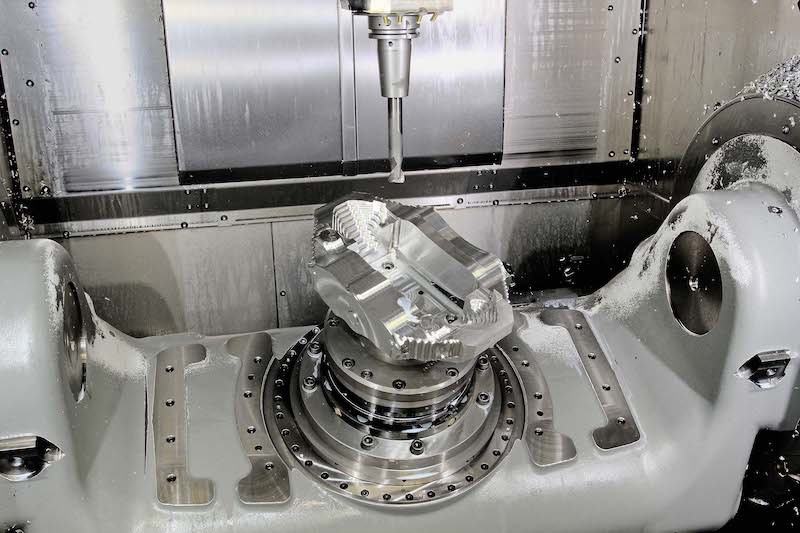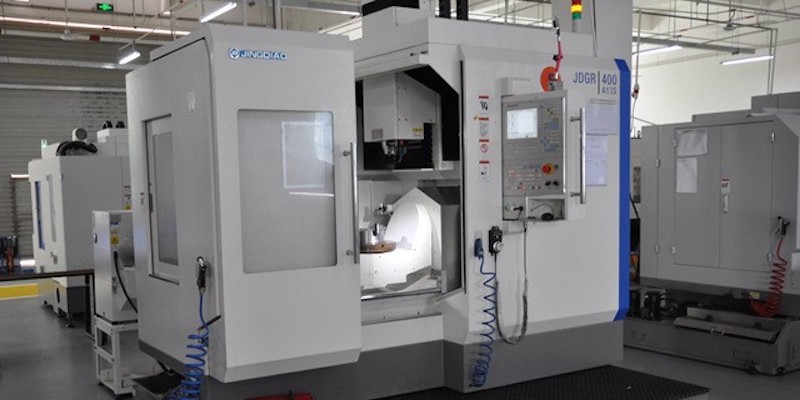Different types of CNC machine have their own advantages and disadvantages. CNC milling machines are an important part of manufacturing and production.
In order to manufacture a component with a CNC milling machine, a low cutting force is essential. Several factors can influence the low cutting force efficiency of the CNC milling machine. In this article, we will discuss several influencing factors and their corresponding solutions.
The Source Of The Cutting Force Of The CNC Milling Machine

The source of the cutting force of the CNC milling machine is very important to consider when selecting the right machine for the job. There are three main types of cutting forces: shear, compression, and torsion. Shear force is generated when the workpiece is cut by the milling cutter.
Compression force is created when the workpiece is held in place by the cutting tools. Torsion force is developed when the workpiece is rotated during machining. All three of these forces must be considered when choosing a CNC milling machine.
Shear force is the primary type of force exerted by a CNC milling machine. It acts on the workpiece like a pair of scissors, slicing through the material. The amount of shear force generated depends on the type of cutter used, as well as the feed rate and depth of cut.
Compression force is created when the workpiece is held in place by the cutting tools. This force acts to compress the workpiece, making it smaller in size. The amount of compression force generated depends on the type of clamping system used, as well as the rigidity of the workpiece.
Torsion force is developed when the workpiece is rotated during machining. This type of force twiststhe workpiece, causing it to deform. The amount of torsion force generated depends on the rotational speed of the spindle, as well as the friction between the workpiece and the cutting tools.
The Main Factors Affecting The Cutting Force Of CNC Milling Machine
The cutting force of a CNC milling machine is fundamentally determined by several different factors, including the parameters of the material being milled, the speed and depth of the cut, as well as the shape of the tool used.
In general, harder materials require a greater force to be milled effectively, as softer materials will tend to rub or clog against the metal cutting tool. Hardness and thickness, play an important role in determining how much resistance the tool will encounter during operation.
On the other hand, factors related to the milling process itself, such as feed rate and tool orientation relative to the material surface, can strongly influence both the total cutting force and where it is directed. Additionally, changes to the geometry or design of the tool itself can have a significant impact on its ability to cut effectively.
The Influence Of Geometrical Parameters Of CNC Milling Machine Tools

Chamfers are a type of mechanical feature that can be found on the edges of various objects and components. When two surfaces meet at an angle, a chamfer is cut or ground along the edge to create a beveled surface. Chamfers can be either internal or external and positive or negative.
(1) Rake angle
The rake angle is the angle between the cutting edge and the face of the tool. It has the greatest influence on the cutting force.
A smaller rake angle will result in a higher cutting force, while a larger rake angle will result in a lower cutting force. In general, a larger rake angle will result in a better surface finish, but it will also cause more wear on the tool.
A smaller rake angle will cause more wear on the tool, but it will also result in a rougher surface finish. At the same time, materials that are difficult to machine (such as stainless steel) require a smaller rake angle to prevent chipping and breaking of the tool. Softer materials (such as aluminum) can be machined with a larger rake angle.
So, the optimum rake angle for a given material and tool should be determined experimentally.
(2) Negative chamfering
A negative chamfer is created when the material is removed from the surface, creating a step down from one surface to another. This step allows for two surfaces to meet without a sharp edge. While this may seem like it would decrease the strength of the overall object, it actually has the opposite effect.
The cutting force of negative chamfers provides greater resistance to impact and wear than positive chamfers. This is due to the fact that the negative chamfer creates a “ramp” effect, which allows the object to better disperse the force of an impact. Additionally, the stepped surface created by a negative chamfer also provides greater resistance to wear over time.
While negative chamfers offer superior resistance to impact and wear, they are not without their drawbacks. One of the biggest challenges associated with negative chamfers is machining them accurately. Due to the stepped nature of the feature, it can be difficult to create a consistent chamfer angle along the entire edge.
Additionally, negative chamfers can also be more challenging to inspect than positive chamfers. This is because the stepped surface can create “shadow” areas that are difficult to see with the naked eye. As a result, it is important to use specialized inspection equipment when checking for negative chamfers.
Despite their challenges, negative chamfers offer a number of benefits that make them an attractive choice for many applications. When designed and manufactured correctly, they can provide superior resistance to impact and wear, while still maintaining the overall strength of the object.
(3) Entering angle
The entering angle is defined as the inclination angle between the knife edge and the workpiece surface. In general, a small entering angle will result in a large cutting force while a large entering angle will decrease the cutting force. Therefore, how to choose an appropriate entering angle is very important for reducing the cutting force.
There are several reasons that can cause the different situations of cutting force with different entry angles:
- With a small entry angle, most of the knife edge is in contact with the workpiece, which means more frictional resistance between them;
- A small enter angle will cause a deep cutting depth, which results in a large shear plane and high cutting stress;
- The chip thickness is closely related to the entering angle. A small enter angle forms a thin chip while a large enter angle causes a thick chip. When the chip is thin, it is easy to flow and curl, thus reducing the cutting force. On the contrary, when the chip is thick, it is difficult to flow and curl, leading to an increase in cutting force.
The above three reasons are closely related to each other. In fact, they are interrelated and interactive. Therefore, it is not easy to determine the influence of the entering angle on the cutting force exactly.
However, the influence of the entering angle on cutting force is not always monotonic. It is affected by many factors such as tool material, workpiece material, feed rate, and so on. Therefore, it is necessary to select an appropriate entry angle according to the specific machining conditions.
Overall, though there is no single formula for determining exactly how much cutting force a given machine requires, understanding these various contributing factors can help engineers optimize their work and ensure optimal performance.
By carefully tuning each aspect of a milling process using various tools and techniques, machinists can ensure that their machines operate at peak efficiency and produce high-quality results every time.
Read Also:




























